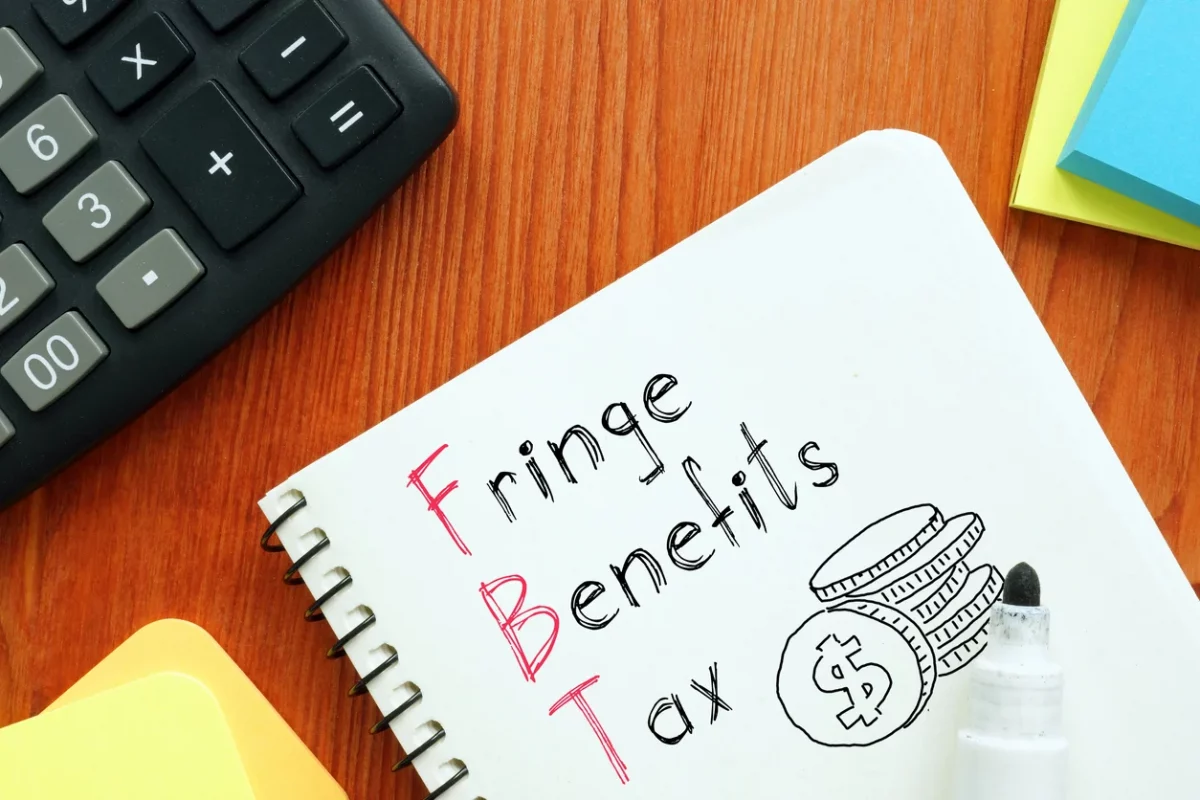As the end of the Fringe Benefits Tax (FBT) year (31 March) is approaching, this article highlights key areas that employers and employees should focus on.
FBT Updates and Common Issues
- Exemption of FBT for electric cars
- Providing equipment for working from home
- Does FBT apply to contractors?
- Reducing the paperwork burden for FBT
- The biggest risks related to FBT
Key FBT Issues
FBT Exemption for Electric Cars
Employers who provide electric vehicles (EVs) to their employees may not have to pay FBT. The exemption applies if:
- The car is electric, hydrogen fuel cell, or a plug-in hybrid.
- The car was first bought and used on or after 1 July 2022.
- The cost of the car is below the luxury car tax limit, which is $89,332 for the 2024-25 financial year.
Plug-in Hybrids Lose FBT Exemption
From 1 April 2025, plug-in hybrid cars will no longer qualify for the FBT exemption. The only exceptions are if:
- The exemption was already applied before 1 April 2025.
- There is a legally binding agreement to continue providing the car for private use after 1 April 2025.
If this agreement is changed or stopped after 1 April 2025, the exemption will no longer apply.
Managing the Exemption
Even though some electric cars are exempt from FBT, employers still need to calculate the taxable value of the benefit. This is because the value of the benefit is still included in the employee’s reportable fringe benefits amount. This amount does not count as taxable income, but it may affect things like:
- Medicare levy surcharge
- Private health insurance rebate
- Employee share scheme discounts
- Social security payments
Employees may need to track the electricity costs they pay when charging the EV at home. These costs can be treated as an employee contribution to reduce the FBT amount. However, it can be difficult to calculate these costs. To help, the Australian Taxation Office (ATO) has provided a shortcut rate of 4.20 cents per km for electric vehicles. This rate does not apply to plug-in hybrid vehicles.
Employers should also note that the FBT exemption for electric cars does not include home charging stations. If an employer provides a charging station for an employee’s home, FBT may apply.
Providing Equipment for Working from Home
Many businesses now allow employees to work from home. Employers often provide work-related items to help employees perform their jobs at home. In most cases, if these items are used mainly for work, FBT does not apply.
For example, if an employer provides laptops, mobile phones, or other portable electronic devices, no FBT should be charged as long as the devices are used mostly for work.
Employers with a turnover of less than $50 million can provide multiple similar items during the FBT year without extra tax. This means a business can provide more than one laptop to an employee if needed.
If an employee uses the employer-provided equipment for personal use, FBT may apply. However, the FBT liability can be reduced based on the percentage of business use.
Does FBT Apply to Your Contractors?
FBT usually applies to employees and some directors. It does not apply to genuine independent contractors. However, businesses must ensure that their contractors are truly contractors.
Are Your Contractors Actually Contractors?
The ATO has provided new guidelines to help determine if a worker is an employee or an independent contractor. The High Court has also ruled on two important cases that set the rules for classification.
The ATO’s TR 2023/4 ruling states that if there is a written contract, the contract’s terms should be the main focus when determining the worker’s status. Just calling someone a contractor in the contract is not enough. If the contract’s terms indicate an employment relationship, the worker will be considered an employee.
The ATO’s PCG 2023/2 guideline provides four risk categories. A contractor arrangement is less risky if:
- There is clear evidence that both the business and the worker agreed on the contractor status.
- A proper written agreement is in place.
- Both parties understand the legal consequences of the arrangement.
- The actual working relationship follows the contract without major changes.
- Legal advice was obtained to confirm the classification.
- The business has followed all tax, superannuation, and reporting rules for the worker.
If your business hires contractors, it is important to review their classification regularly. Even if a worker is a genuine independent contractor, businesses may still have obligations, such as paying superannuation in certain situations.
Reducing the FBT Record-Keeping Burden
Keeping records for FBT can be time-consuming. However, from 1 July 2024, businesses will have more options. You can either continue using the current FBT record-keeping methods, use existing business records (if they meet the legal requirements), or combine both methods.
Here are some types of records you may need to keep:
- Travel diaries – see LI 2024/11
- Living-away-from-home-allowance (FIFO/DIDO declarations) – see LI 2024/4
- Living-away-from-home maintaining an Australian home declaration – See LI 2024/5
- Expense payments, property, or residual benefits declaration (Otherwise Deductible Rule) – See LI 2024/6
- Private use of a vehicle other than a car declaration– See LI 2024/7
- Car travel for a job interview or selection test declaration– See LI 2024/14
- Remote area holiday transport declaration– See LI 2024/10
- Overseas employment holiday transport declaration– See LI 2024/13
- Car travel for certain work-related activities declaration– See LI 2024/9
- Relocation transport declaration– See LI 2024/12
- Temporary accommodation for relocation declaration – See LI 2024/8
FBT Housekeeping
Keeping track of records for fringe benefits can be tricky, especially if they depend on employees providing documents on time. If your business provides cars, you must record odometer readings on 31 March and 1 April. To make this easier, ask employees to take a photo of the odometer and email it to a central contact person. This will help avoid missing records or having to check each car manually.
Biggest FBT Risk Areas
Mismatched Entertainment Claims
One of the most common FBT mistakes is claiming a tax deduction for entertainment expenses but not reporting the benefit for FBT purposes. The ATO closely monitors these mismatches.
For example, if a business takes a client to lunch and the cost per person is under $300, there may not be any FBT. However, the business cannot claim a tax deduction or GST credit unless FBT applies. If the business uses the 50/50 method for entertainment expenses, then 50% of the cost is subject to FBT, and only 50% of the amount can be claimed as a deduction.
Employee Contributions Made by Journal Entry
Many businesses allow employees to make after-tax contributions to lower the taxable value of fringe benefits. Instead of paying in cash, some businesses record these contributions as journal entries in their accounting system.
While this method can be acceptable if done correctly, the ATO has raised concerns about whether journal entries made after the FBT year-end are valid.
For an employee contribution through a journal entry to be valid in reducing FBT, these conditions must be met:
- The employee must be required to make a contribution toward the fringe benefit as part of their employment agreement.
- The employer must owe the employee a payment, such as a loan or a bonus that hasn’t been paid yet. However, if a loan is involved, additional tax issues may arise.
- Both the employee and employer must agree to offset their respective obligations (the employee’s contribution against the employer’s payment).
- The journal entries must be made before the business finalizes its financial accounts for the year.
If these conditions are not met, the ATO may challenge the validity of the arrangement. The business must keep proper documentation showing that the employee was actually required to contribute toward the fringe benefit. If there is no clear evidence, the business may face unexpected FBT liabilities.
Not Lodging FBT Returns
The ATO has noticed that some businesses are failing to submit FBT returns when they are required to do so.
If your business employs staff, including family members in a closely held business, and is not registered for FBT, you should review whether you might have an FBT liability.
You may need to lodge an FBT return if your business provides any of the following:
- Cars or parking spaces for employees
- Reimbursements for private (non-business) expenses
- Entertainment, such as meals and drinks
- Employee discounts
Some benefits are exempt from FBT, such as work-related electronic devices (e.g., laptops), protective clothing, and tools of trade. If your business only provides these exempt items or occasional benefits worth less than $300, you likely do not need to worry about FBT. However, if you provide any taxable fringe benefits, it’s important to ensure compliance to avoid penalties.
Pitt Martin Group is a CPA accounting firm, providing services including taxation, accounting, business consulting, self-managed superannuation funds, auditing and mortgage & finance. We spend hundreds of hours each year on training and researching new tax laws to ensure our clients can maximize legitimate tax benefit. Our contact information are phone +61292213345 or email info@pittmartingroup.com.au. Pitt Martin Group is located in the convenient transportation hub of Sydney’s central business district. Our honours include the 2018 CPA NSW President’s Award for Excellence, the 2020 Australian Small Business Champion Award Finalist, the 2021 Australia’s well-known media ‘Accountants Daily’ the Accounting Firm of the Year Award Finalist and the 2022 Start-up Firm of the Year Award Finalist, and the 2023 Hong Kong-Australia Business Association Business Award Finalist.
Pitt Martin Group qualifications include over fifteen years of professional experience in accounting industry, membership certification of the Australian Society of Certified Practising Accountants (CPA), Australian Taxation Registered Agents, certified External Examiner of the Law Societies of New South Wales, Victoria, and Western Australia Law Trust Accounts, membership certification of the Finance Brokers Association of Australia Limited (FBAA), Registered Agents of the Australian Securities and Investments Commission (ASIC), certified Advisor of accounting software such as XERO, QUICKBOOKS, MYOB, etc.
This content is for reference only and does not constitute advice on any individual or group’s specific situation. Any individual or group should take action only after consulting with professionals. Due to the timeliness of tax laws, we have endeavoured to provide timely and accurate information at the time of publication, but cannot guarantee that the content stated will remain applicable in the future. Please indicate the source when forwarding this content.
By Angela Abejo @ Pitt Martin Tax










